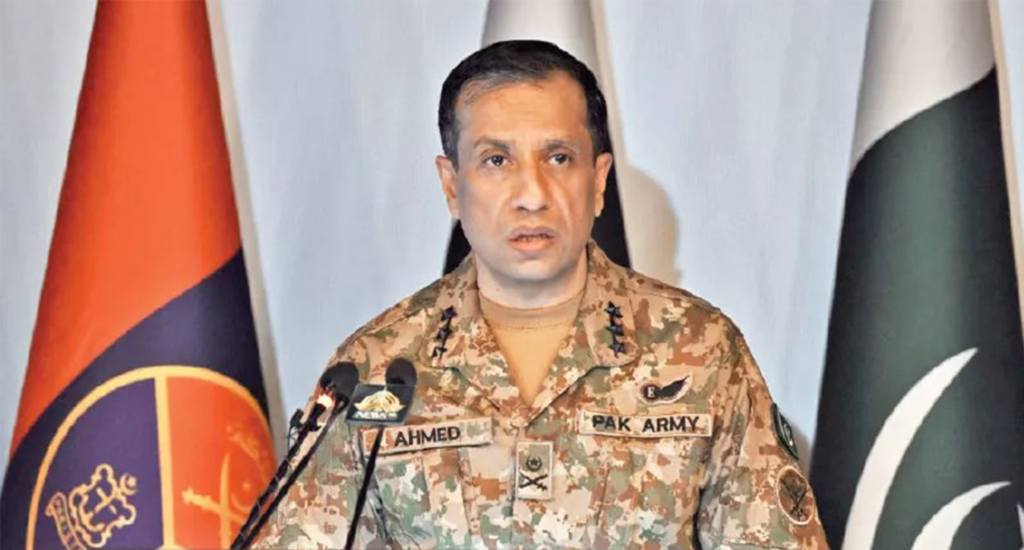India’s Coward Airstrikes on Pakistan
- Abeera Marium Siddiqui
- May 7, 2025
- 4:54 pm
- 41
- Trending

The Indian aggression against Pakistan took a dangerous turn on the night between May 6 and 7. India launched unprovoked airstrikes across multiple cities in Pakistan, killing at least 26 civilians and injuring 46 others. The strikes also targeted the Neelum-Jhelum Hydropower Project, sparking fears of a regional escalation.
During a media briefing on Wednesday, Inter-Services Public Relations (ISPR) Director General Lt Gen Ahmed Sharif Chaudhry condemned India’s reckless actions. He revealed that India carried out 24 airstrikes on six different civilian areas. These included Bahawalpur’s Ahmedpur East, Muzaffarabad, Kotli, Sialkot, and Shakargarh.
In Ahmedpur East alone, 13 people were martyred. The victims included two three-year-old girls, seven women, and four men. At least 37 others were injured, including nine women and 28 men.
In Muzaffarabad, Indian missiles hit Bilal Mosque. Three worshippers lost their lives. Two children—a boy and a girl—were seriously injured. In Kotli, the Abbas Mosque was also attacked. A 16-year-old girl and an 18-year-old boy were martyred. A mother and her daughter sustained injuries.
The ISPR DG confirmed that Indian forces deliberately targeted mosques in multiple cities. In Muridke, a mosque strike martyred three men and injured another. He said this behavior reflects the extremist and anti-Muslim mindset of the Modi-led government.
Along the Line of Control (LoC), Indian troops opened fire on civilian areas. Five more Pakistanis, including a five-year-old child, were martyred. Although Sialkot and Shakargarh were also targeted, there were no reported casualties. Only minor property damage occurred in those locations.
Lt Gen Chaudhry questioned India’s motives. “Does international and war laws allow targeting the water reserves of a country?” he asked. The strikes hit the Nauseri Dam, part of the Neelum-Jhelum Hydropower Project. The military labeled this a “dangerous escalation” and warned about the broader implications of Indian aggression against Pakistan.
He also noted that at the time of the attacks, 57 international and domestic flights were in Pakistani airspace. Thousands of civilian lives were at risk due to India’s irresponsible behavior.
In response, the Pakistan armed forces took swift and decisive action. The Pakistan Air Force shot down five Indian fighter jets, including three Rafale jets, one MiG-29, and one SU-series aircraft. It also destroyed an Israeli-made Heron combat drone.
These aircraft were downed in Bhatinda, Jammu, Akhnoor, Srinagar, and Avantipur. The ISPR chief clarified that Pakistan only engaged after Indian jets bombed civilian areas inside Pakistani territory.
The Pakistan Army also targeted and destroyed Indian military positions. Key enemy check posts at Danna, Gafdar, Dodhial, Chhatri, and Khaki Tekri were eliminated. In the Badori sector, around 50 Indian soldiers abandoned the Jolly Post during Pakistan’s counterattack.
Lt Gen Chaudhry emphasized that the response was measured and defensive. Pakistani aircraft did not cross into Indian airspace. He said Pakistan had the capacity to down more jets but chose restraint.
He assured the nation that all strategic and military assets remain safe. No Pakistani aircraft allowed any intrusion into the country’s airspace.
Local and foreign journalists had just visited some of these sites before the strikes. These visits, including planned ones to Muridke and Bahawalpur, helped expose India’s false narratives and highlighted the pattern of Indian aggression against Pakistan.
The ISPR DG called the attacks a serious violation of the LoC ceasefire. He urged regional and international bodies to take note of India’s escalating aggression. He concluded by stating, “Pakistan does not want war but is fully prepared to defend itself.”



